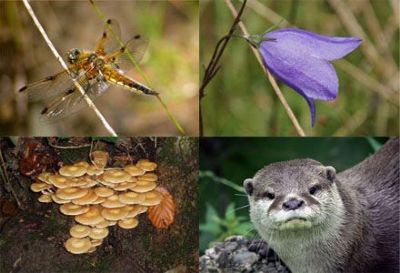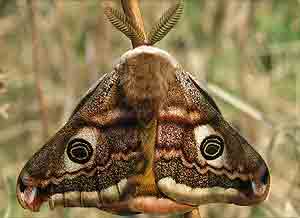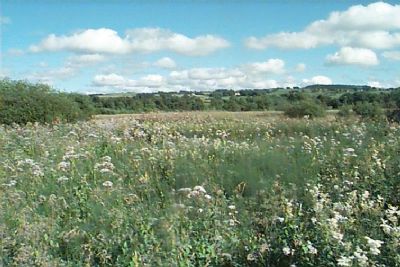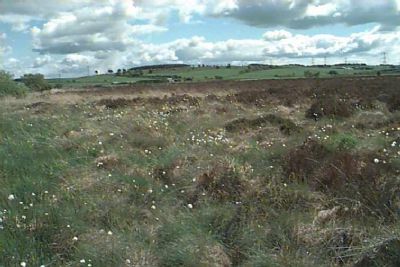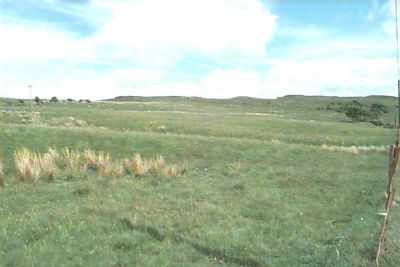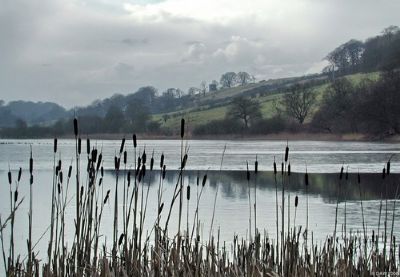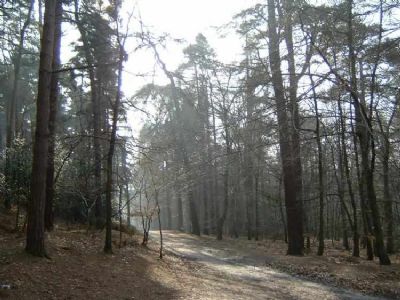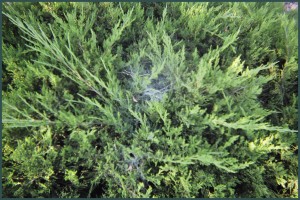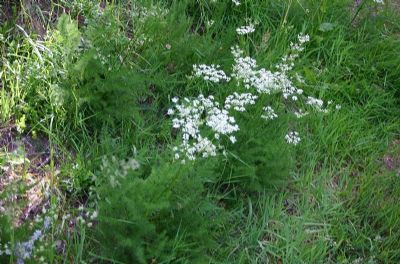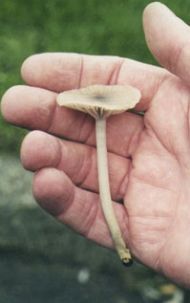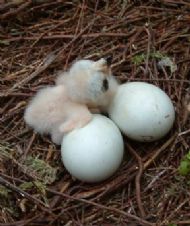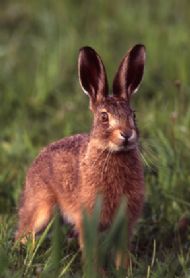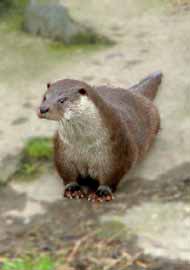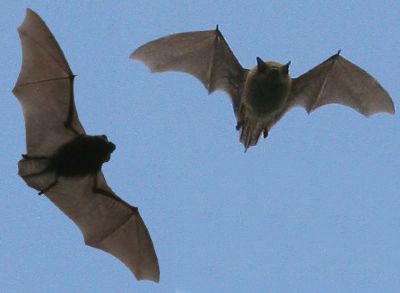 Biodiversity in Inverclyde, Renfrewshire and East Renfrewshire | sitemap | log in Biodiversity in Inverclyde, Renfrewshire and East Renfrewshire | sitemap | log in
|
 |
||
| Spanglefish Gold Status Expired 28/04/2010. | ||
The Action PlansThe Inverclyde, Renfrewshire and East Renfrewshire Action Plan is a working document that is used by local organisations and Local Biodiversity Action Plan Partners. Action plans layout the measures needed for the protection of habitats and species in the Inverclyde, Renfrewshire and East Renfrewshire region. The LBAP is designed to protect and enhance local and national priority species and habitats. It is a detailed plan specifying the actions required to meet proposed objectives and targets. Action plans are accessible to a wide range of people, from those in lead organisations, such as Councils, to individuals with an interest in the environment.
Biodiversity of plants and animals Click on the links below to view our Action Plans Habitat Action Plans:Broadleaved and Mixed Woodland
Species Action Plans:
Greater Butterfly Orchids and Lesser Butterfly Orchids
Habitat Action PlansDwarf Shrub HeathDwarf Shrub Heaths are characterised by vegetation dominated by members of the heath family (Ericaceae), the most familiar of which is the Heather which characterises much of upland Scotland.
We in Renfrewshire have an important obligation to preserve and restore our local examples (above) of this globally rare and threatened habitat. Special plants and animalsOur local wet heaths are dominated by Heather (Calluna vulgaris) with varying amounts of the other dwarf shrubs. Cross-leaved Heath (Erica tetralix), Bell Heather (Erica cinerea), Crowberry (Empetrum nigrum) and Blaeberry (Vaccinium myrtilis). Associated plants vary with the drainage characteristics and degree of grazing at individual sites but usually include Purple Moor Grass (Molina cinerea), Deer Grass (Trichophorum cespitosum), various bog mosses (Sphagnum) and moorland lichens (particularly Cladonia spp.). The wet heaths of Renfrewshire support a distinctive moorland fauna including: · Mountain Hare (Lepus timidus) · breeding birds such as Hen Harrier (Circus cyaneus) Short-eared owl (Asio flammea), Black Grouse (Tetrao tetrix) and Red Grouse (Lagopus lagopus), and breeding waders such as Golden Plover (Pluvailis apricaria), Snipe (Gallinago gallinago) and Curlew (Numenius arquata). · interesting insects such as Green Hairstreak Butterfly (Callophrys rubi) and Emperor Moth (Saturnia pavonia), plus unique assemblages of spiders and beetles.
On sunny days during April and May, the spectacular Emperor Moth (above) can be seen flying rapidly over the heather at several heaths in Renfrewshire. (Photo: Kelly Thomas) Click on the link below to view the Action Plan (PDF) Biodiversity/documents/Dwarf%20shurb%20heath.pdf Mires and FensMire and fen habitat forms on ground which is waterlogged for most of the year and where incomplete decomposition of the vegetation results in peat formation. Mire vegetation varies widely however, depending on the range of nutrients available. A lush, diverse range of plants may be present if streams and springs bring in a good supply of nutrients from the surrounding area. Good examples of this type of "Rich-Fen" mire can be seen at Aird Meadow (Lochwinnoch), Loch Libo (nr. Uplawmoor) and Glen Moss (Kilmacolm).
The rich fen habitat at Aird Meadow (above) in full bloom during July. Among the sedges and Canary Reed Grass can be seen a profusion of flowering Meadowsweet, Valerian, Angelica and the introduced Himalayan Balsam.
Raised bog on the Gleniffer braes (above). Special plants and animalsWhile relatively small, the best examples of rich-fen in Renfrewshire, support a wide range of plants with characteristic species including Reed Canary-grass (Phalaris arundinacea), various sedges (Carex spp.) Marsh Marigold (Caltha palustris) Meadowsweet (Filipendula ulmaria), Angelica (Angelica sylvestris), Valerian (Valeriana officinalis) and Marsh Cinquefoil (Potentilla palustris). Such vegetation is an important breeding habitat for some breeding birds, with typical birdsong like the grating chattering of the Sedge Warbler (Acrocephalus schoenobaenus), the insect-like "reeling" of Grasshopper Warbler (Locustella naevia) and the simple three-notes of the Reed Bunting still being commonly heard. Our rich-fens support insects like Damselflies and dragonflies and the Small Pearl-bordered Fritillary butterfly (Boloria selene) (Glen Moss, Aird Meadow). In general, nutrient-poor mires like blanket bogs and raised bogs support quite different plants and animals to rich-fens although many mires lie somewhere between these two extremes.
Bog Asphodel Narthecium ossifragum, a member of the lily family and a bog specialist - growing on one of Renfrewshire's few remaining raised bogs on the Gleniffer Braes (above). (Photo: J R Crellin) Renfrewshire contains some good examples of nutrient-poor mires which support a number of locally rare species such as Coral-root Orchid (Corallorrhiza trifida), Early Marsh Orchid (Dactylorhiza incarnata), Bog Sedge (Carex limosa), Lesser Tussock-sedge (Carex diandra), bladderworts (Utricularia spp.) and the bog moss Sphagnum contortum. Click on the link below to view the Action Plan (PDF) Biodiversity/documents/mires.pdf Unimproved GrasslandsUnimproved grasslands and those which have only been slightly managed support the best variety of plants and animals. Most of the best unimproved grassland in Renfrewshire is associated with upland pastures with the most extensive areas to be found around and within the Clyde-Muirshiel Regional Park, the Eaglesham Moors and along the Gleniffer Braes-Lochliboside hills.
The vast majority of this grassland is acidic in nature and characterised by the grasses Sheep's Fescue (Festuca ovina) (above),Mat-Grass (Nardus stricta) and Wavy-hair Grass (Deschampsia flexuosa). Special plants and animalsWhile it is the entire diversity of flora and wildlife that is important, some species and groups of species are particularly characteristic and vulnerable elements of biodiverse grasslands: · waxcap toadstools Hygrocybe spp. · herbs such as Spignel (Meum athamanticum), Pignut (Conopodium majus), Harebell (Campanula rotundifolia), Mountain Pansy (Viola lutea), Heath Spotted Orchid (Dactylorhiza fushii) and Greater Butterfly Orchid (Platanthera chlorantha), to name but a few. · Brown Hare (Lepus europaeus) · declining breeding birds such as Grey Partridge (Perdix perdix), Lapwing (Vanellus vanellus), Curlew (Numenius arquata), Skylark (Alauda arvensis) and Linnet (Carduelis cannabina), · insects such as grasshoppers, the Six-spot Burnet Moth (Zygaena filipendulae) and butterflies including the Small Heath (Coenonympha pamphilus) and Common Blue (Polyommatus icarus). Click on the link below to view the Action Plan (PDF) Biodiversity/documents/unimproved%20grasslands.pdf Rivers and StreamsClick on the link below to view the Action Plan (PDF) Biodiversity/documents/rivers%20and%20streams.pdf Standing Open WaterThere are numerous lochs, reservoirs and ponds scattered throughout Renfrewshire. Many of these water bodies are artificial reservoirs on higher ground but since these often have relatively low levels of dissolved nutrients, steep artificial shorelines and do not support a particularly wide range of plants and animals. There are larger natural lochs in lowland areas which often suffer from the opposite problem, namely artificially high nutrient levels caused by sewage and run-off of fertiliser from surrounding farmland. These nutrient enriched lochs may also have low biodiversity due to the algal "blooms" that develop in these conditions deoxygenating the water and blocking the passage of light to the larger aquatic plants. Such nutrient enrichment, or eutrophication, is a particular problem at the Castle Semple Loch/Aird Meadow/Barr Loch complex at Lochwinnoch. Renfrewshire has rather few mesotrophic lochs (those with medium nutrient levels) - the type that supports the greatest biodiversity - of which Loch Libo near Uplawmoor is probably the best example (below).
Special plants and animalsAll unpolluted water bodies support aquatic plants such as pondweeds (Potamageton spp.) a range of aquatic insects such as water beetles, mayfly and dragonfly nymphs. The low water levels allowed to develop at Balgray reservoir (near Barrhead) in recent summers have lead to the establishment of Trifid Bur Marigold (Bidens triparlita) on its muddy margins, a plant rarely found north of the English midlands. Brown Trout (Salmo trutta) thrive throughout Renfrewshire, although natural stock are often supplemented with farm reared fish, by angling clubs. Perch (Perca fluviatilis) and Pike (Esox lucius) also occur widely while Roach (Rutilus rutilus) can be found in a few lochs (e.g. the "Three Lochs" complex at Lochwinnoch). Our lochs and reservoirs are also important spawning sites for frogs, toads and newts (both Smooth and Palmate newts). A range of waterbirds are dependent on this habitat for breeding, including Great Crested Grebe (Podiceps cristatus; aprox. 15 pairs), Little Grebe (Tachybaptus rufficollis; aprox. 50 pairs), Coot (Fulica atra; approx. 60 pairs), Moorhen (Gallinula chloropus; at least 200 pairs) and half a dozen species of duck. In addition, the lush vegetation often found around the margins of water bodies is important for the increasingly scarce Reed Bunting (Emberiza shoeniclus). Standing open water is also an essential to the maintenance of any associated fen or marsh habitat. Click on the link below to view the Action Plan (PDF)
Broadleaved and Mixed WoodlandBritain is one of the least wooded countries in Europe and preserving what is left of our woodland resource is seen as a priority in the UK Biodiversity Action Plan. Our largest areas of woodland locally are the dense commercial conifer plantations of low biodiversity that cover much of upland Inverclyde and the East Renfrewshire moors (below).
The most valuable woods in Renfrewshire from a biodiversity point of view may be those which have best compromise between age (ideally over 150 years old), size (over 10 ha), proportion of native trees (high) and recent human influence (little disturbance and management), e.g. those at Finlaystone and Drums estates ( both nr. Langbank), Duchal Estate (Kilmacolm), Barochan Moss (Houston), Erskine Big Wood, Lawmarnock (nr. Kilbarchan), Loch Libo (Uplawmoor) and Waulkmill Glen (nr. Barrhead). Special plants and animalsIn the longer established woods that have escaped grazing by livestock, a natural ground flora may have developed. This often includes primroses and colourful expanses of bluebell in April, being replaced later in the Spring and Summer by a variety of ferns and other shade-loving plants such as Wood Anenome (Anemone nemorosa), Wood Sorrel (Oxalis acetosella) and Dog's Mercury (Mercurialis perenne). Many interesting animals also occur in Renfrewshire's broadleaved woods especially where these are undisturbed or when visitor impact is managed. Renfrewshire's broadleaved woods provide homes to Badgers (Meles meles), Foxes (Vulpes vulpes), Roe Deer (Capreolus capreolus), bats, woodland rodents and shrews, while specialist woodland birds like Woodcock (Scolopax rusticola), Great Spotted Woodpecker (Dendrocopus major) and Blackcap (Sylvia atricapilla) all breed. Click on the link below to view the Action Plan (PDF) Biodiversity/documents/broad%20and%20mixed%20woodland.pdf UrbanClick on the link below to view the Action Plan (PDF) Biodiversity/documents/urban.pdf Species Action PlansGreater Butterfly Orchid (Platanthera chlorantha) and Lesser Butterfly Orchid ( P. bifolia)
|   |
|
 | ||
